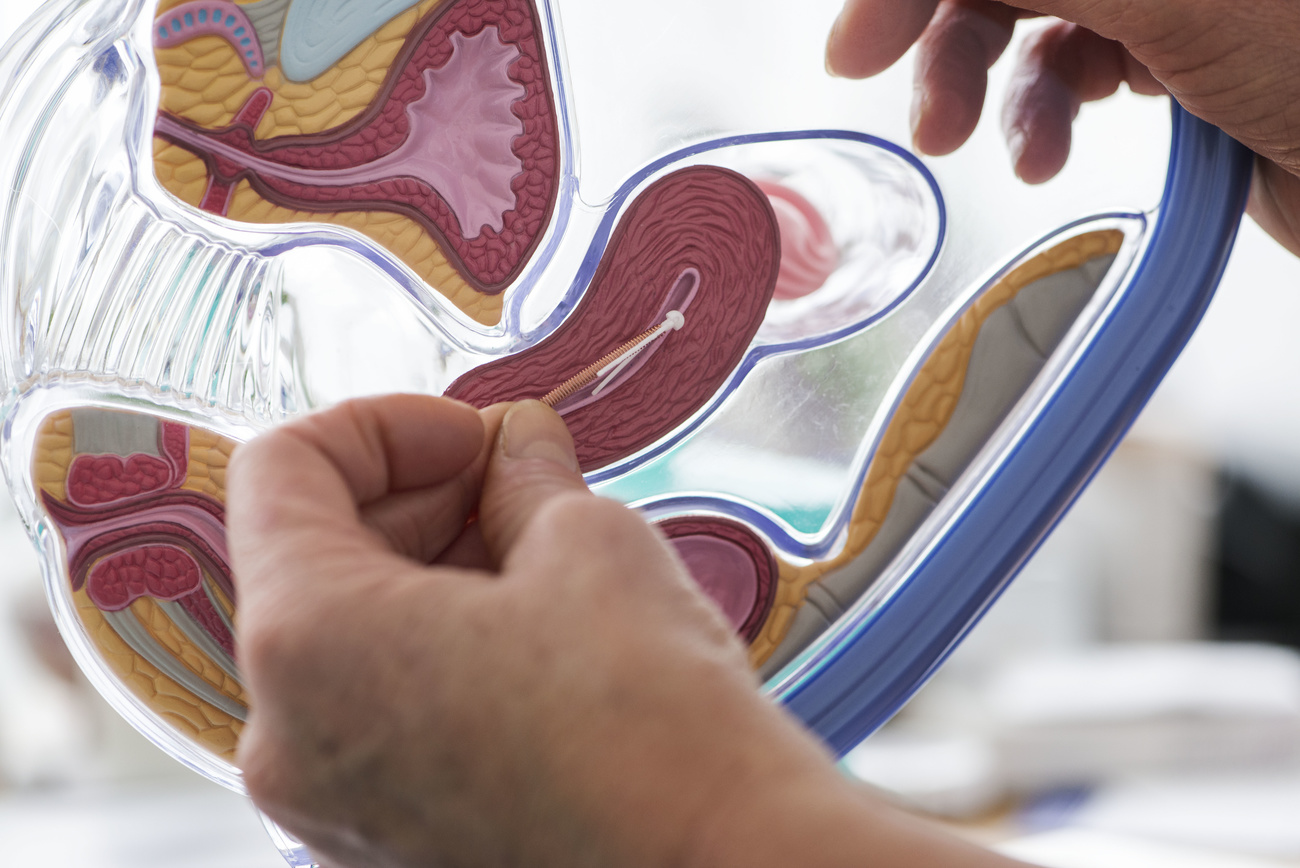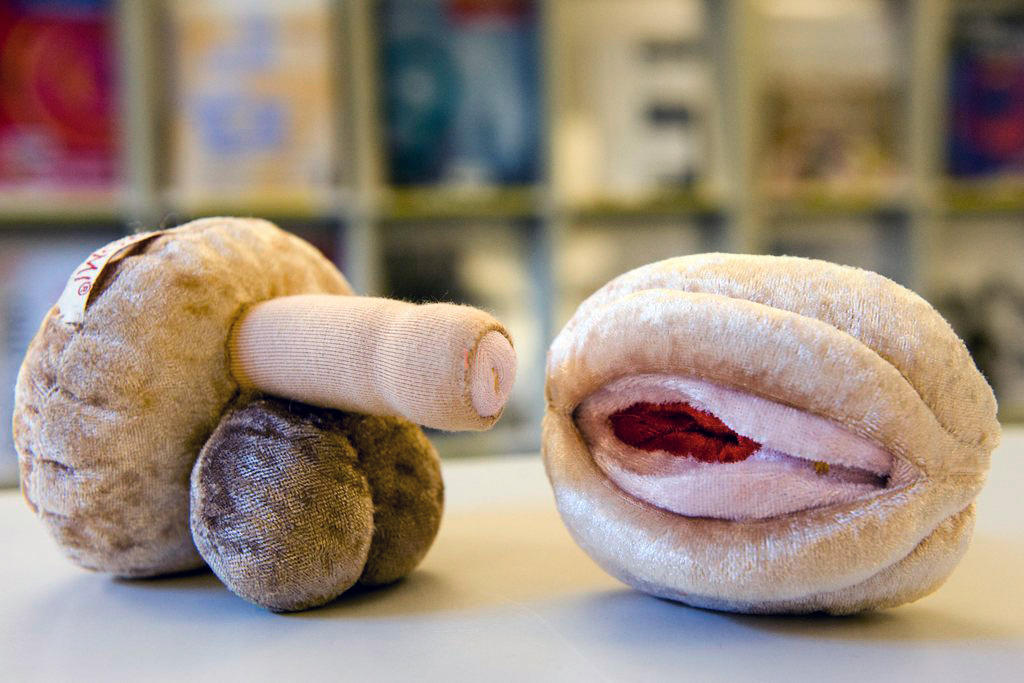Swiss start-up aims to spare women unnecessary pain

“I can still feel the pain and I feel physically ill remembering it. It was like a very intense physical version of hearing nails scratching down a blackboard. When I’m having it out, I’ll need to be anaesthetised.”
This is the experience of a woman who recently underwent the insertion of an intrauterine device (IUD) or coil, a widely used contraceptive device. A Swiss company is offering hope with a new gentler instrument it has developed for the procedure.
Incredibly, in the last century, there has been very little innovation in the basic design of the main instruments used for gynaecological examinations and procedures.
To insert or remove the IUD through the cervix, doctors must grasp and often pierce the cervix with a pincer-like instrument called a tenaculum. In some patients this causes cervical trauma and bleeding.
Doctors in Lausanne University Hospital (CHUV) are currently testing a suction-based alternative to the single-tooth tenaculum, developed by a local company, Aspivix.
Inserted into the womb, an IUD is one of the most effective forms of contraception. More than one in five Swiss women in their 30s use this method. But pain or fear of pain is a known barrier to IUD uptake.
‘Substantial pain’
Indeed, many women experience “substantial pain” during IUD insertion or removal. According to one of the most-cited studiesExternal link on the topic, the rate is 17% for women who haven’t given birth and 11% for those who have.
Professor Patrice Mathevet is leading the CHUV trial. “It is a recognised issue,” he said. “In the second part of the study we will compare how patients rate their pain with the two different instruments.”
The old tenaculum is still a good instrument, according to Mathevet. “It’s quite aggressive when you look at it but it has been refined over the years.” In his practice, he uses local anaesthetic on the cervix before applying the tenaculum. The tenaculum is also used for embryo transfer in assisted reproduction and in other procedures.
Various pain relief measures used during IUD insertion have proven unsuccessful, according to a 2015 studyExternal link, and different doctors favour different approaches based on their experience.
The three co-founders of Aspivix – Julien Finci, David Finci and Mathieu Horras – are proud of the gentler instrument they have devised to replace the tenaculum, but they say it’s been a challenge to convince (mostly) male investors to care about a women’s health issue.
“The standard tenaculum is called Kugelzange or bullet forceps in German. It is derived from a medical instrument used in wartime that moved to gynaecology,” Aspivix chief technology officer Julien Finci explained.
Serendipity
The business idea for the alternative instrument owes its existence to the career choices of Julien Finci, a biomedical engineer and his brother David, a gynaecologist.

Julien Finci was working for a life sciences company, designing medical devices, when David told him about the difficulties he was encountering in his daily practice, inflicting pain on patients with the sharp tenaculum. Julien was inspired to explore the possibility of redesigning the instrument, using suction instead.
In 2013, Julien did a start-up course at the Venture Lab of his alma mater, Lausanne’s Federal Institute of Technology, and saw the need to join forces with a business-minded person. Mathieu Horras, a marketing executive and Finci’s lunchtime running buddy at the life sciences company, was soon convinced the idea had potential.
“Six months after David and I had the idea, we teamed up with Matthieu who became the company’s CEO,” Julien Finci said.
Horras now has the zeal of a convert. “The tenaculum was developed without any thought for the patient’s comfort. When Julien first started talking about this, I had no idea about the problem and was somewhat sceptical.”
The demand is potentially huge. In the company’s own survey of 100 physicians and midwives, 98% said they were unsatisfied with the tenaculum.
“Pain and fear of pain is a high barrier for women who could avail of IUD contraception which is the most efficient reversible contraception,” Horras said. A 2015 Cochrane systematic studyExternal link backs up this assertion.
Connecting with male investors
But during funding rounds, Horras has been met with scepticism by investors. “We found it difficult to connect with investors who are mainly men. A story about drones, for example, will make them dream instantly. But women’s healthcare is rarely a comfortable topic. This is not something people talk about at a dinner party, either as a practitioner or a patient.”
Step by step, since 2015, Aspivix’s founders have manged to attract enough investment to advance their idea. The company was selected by the federal government’s innovation programme Innosuisse to take part in its scale-up coaching programme which runs until 2022.
Aspivix’s next-generation surgical instrument is on target to receive approval from European health and safety authorities this year, and the small company with nine employees is at a critical juncture. The next challenge for the Aspivix team is to be able to manufacture and distribute their instrument. Although a clinical trial is not a requirement for this product, the company will integrate recommendations from the clinical study at the CHUV.
Next steps
Only one other similar device currently exists. Developed by a New Orleans-based company, Bioceptive, it received clearanceExternal link from the US Food and Drug Administration in 2015. There was talk of an imminent market rollout, but this hasn’t happened.
Bioceptive did not respond to requests for information about its device which “uses gentle suction to engage the cervix, creating an easy portal into the uterus for a variety of instruments and procedures”, according to media reports at the time.
Horras explained that “having a smart idea is not sufficient. It needs to be practical and usable. We had to decrease the number of parts in our single-use device to make production scalable.”

Aspivix wants to produce in Switzerland and has identified suppliers of plastic instruments. Unlike the traditional tenaculum, the company’s instrument is single-use and disposable.
And Aspivix needs a partner. “We are looking for distribution partners, companies for whom it is a win-win to introduce this device. In our case, IUD manufacturers would make a lot of sense.”
However long women will have to wait, the Aspivix solution is no magic wand. There may still be pain for some patients associated with going through the cervix and uterine cramps. But the fact that new gentler instruments are in the pipeline is a good sign for this neglected area of medicine.

More
The future of birth control

In compliance with the JTI standards
More: SWI swissinfo.ch certified by the Journalism Trust Initiative














You can find an overview of ongoing debates with our journalists here . Please join us!
If you want to start a conversation about a topic raised in this article or want to report factual errors, email us at english@swissinfo.ch.